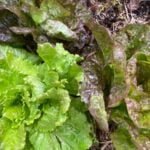Residential vegetable gardens in Florida have become increasingly popular among homeowners looking to enjoy the benefits of growing their own produce right in their backyard. The Sunshine State’s warm climate and rich soil create an ideal environment for cultivating a wide variety of vegetables, making it easy for people to embrace the practice of home gardening.
From tomatoes and peppers to herbs and leafy greens, Florida offers a diverse range of options for those looking to start their own garden.
In addition to having access to fresh, organic produce just steps away from your kitchen, maintaining a residential vegetable garden can also promote sustainability, reduce grocery bills, and provide a rewarding and therapeutic outdoor activity. Whether you are an experienced gardener or just starting out, there are numerous resources and guides available to help you navigate the process of planning, planting, and caring for your very own vegetable patch in Florida.
As more individuals recognize the value of cultivating their own food at home, residential vegetable gardens have not only become a source of nutrition but also a way to connect with nature and reduce carbon footprint.
In this article, we will delve into some valuable insights on the best vegetables to grow in Florida, tips for designing an efficient garden layout, soil preparation techniques, pest control strategies, seasonal planting guides specific to Florida’s climate, harvesting recommendations, and inspiring success stories from local gardeners who have reaped the rewards of tending to their own sustainable gardens.
Best Vegetables to Grow in Florida
When it comes to establishing a successful residential vegetable garden in Florida, choosing the right vegetables is crucial. The sunny and humid climate of Florida provides an ideal environment for certain types of vegetables to thrive. Here are some of the best vegetables to grow in Florida:
- Tomatoes: One of the most popular choices for Florida gardens, tomatoes come in a variety of shapes, sizes, and colors. They require full sunlight and well-drained soil to thrive.
- Peppers: Whether sweet bell peppers or spicy chili peppers, these plants love the warm temperatures of Florida. Peppers also do well in containers, making them a versatile option for smaller gardens.
- Herbs: Herbs like basil, mint, and oregano are perfect for adding flavor to your dishes and can be easily grown in Florida’s climate. They can be planted directly in the ground or in pots on a sunny patio.
In addition to these vegetables, other options that do well in Florida include cucumbers, squash, beans, and leafy greens like kale and lettuce. By choosing plants that are well-suited to the local climate and soil conditions, you can increase your chances of success with your residential vegetable garden.
When planning your garden layout, consider companion planting techniques that can help improve crop health and yield. For example, planting marigolds near tomatoes can help deter pests, while interplanting herbs like parsley between vegetable rows can attract beneficial insects. Proper spacing between plants is also important to allow for adequate air circulation and sunlight exposure.
By selecting the right vegetables for your residential vegetable garden in Florida and carefully planning your layout, you can create a thriving and productive space that provides fresh produce throughout the year. With proper care and attention to detail, you’ll soon be enjoying delicious homegrown vegetables straight from your own backyard.
Planning Your Garden Layout
When it comes to planning your residential vegetable garden in Florida, maximizing space and productivity are key factors to consider. One effective tip for designing your garden layout is to utilize raised beds or container gardening. This allows for better control over soil quality, drainage, and spacing between plants. Raised beds can also make gardening more accessible by reducing the need for bending and kneeling.
Another important aspect of planning your garden layout is considering companion planting. Certain vegetables grow well together and can even benefit each other by deterring pests or enhancing flavor. For example, planting aromatic herbs like basil or mint near tomatoes can help repel insects that often target tomato plants. Researching companion planting combinations specific to Florida’s climate can help you make the most of your garden space.
In addition to raised beds and companion planting, incorporating vertical gardening techniques can further maximize space in your residential vegetable garden. Vertical gardens allow you to grow more plants in a smaller footprint by utilizing walls, trellises, or hanging baskets.
This method is especially useful for vining vegetables like cucumbers or peas, which can climb and grow vertically instead of spreading out horizontally. By carefully planning your garden layout with these tips in mind, you can create a productive and efficient space for growing a variety of vegetables in your own backyard.
| Tip | Benefit |
|---|---|
| Utilize raised beds or containers | Better control over soil quality and drainage |
| Consider companion planting | Natural pest repellent and flavor enhancement |
| Incorporate vertical gardening techniques | Maximize space by growing plants vertically |
Soil Preparation and Maintenance
When it comes to establishing a successful residential vegetable garden in Florida, one of the key factors to consider is soil preparation and maintenance. Having nutrient-rich soil is essential for healthy plant growth and bountiful harvests. Florida’s sandy soil may require amending with organic matter such as compost or manure to provide the necessary nutrients for vegetables to thrive. Here are some tips on how to prepare and maintain your garden’s soil:
- Conduct a soil test to determine pH levels and nutrient deficiencies
- Amend the soil with compost, well-rotted manure, or organic fertilizers to improve fertility
- Consider using raised beds or containers with high-quality potting mix for better control over soil quality
- Practice crop rotation to prevent nutrient depletion and minimize the risk of disease
Proper watering techniques are also crucial for the health of your residential vegetable garden in Florida. In the hot and humid climate of the state, plants may require more frequent watering to prevent them from drying out. However, overwatering can lead to root rot and other problems. Here are some watering tips to keep in mind:
- Water deeply but infrequently to encourage deep root growth
- Avoid wetting the foliage to prevent fungal diseases
- Use mulch around plants to retain moisture and suppress weeds
- Consider installing a drip irrigation system for efficient water use
In addition to proper soil preparation and watering, using organic fertilizers can help boost plant health and productivity in your Florida residential vegetable garden. Organic fertilizers provide slow-release nutrients that feed the plants gradually, promoting strong roots and vigorous growth. Some options for organic fertilizers include compost tea, fish emulsion, seaweed extract, and bone meal. By incorporating these natural amendments into your gardening practices, you can create a thriving environment for your vegetables to flourish throughout the growing season.
By following these guidelines for soil preparation, proper watering techniques, and organic fertilization, you can ensure that your residential vegetable garden in Florida will be set up for success. With healthy soil and well-nourished plants, you’ll be on your way to enjoying a fruitful harvest of homegrown produce right in your backyard.
Pest Control
One of the most important steps in pest control is to practice good garden hygiene. Keeping your garden clean and free of debris can help prevent pests from taking up residence and spreading diseases. Remove any dead or diseased plant material promptly, as they can attract harmful insects and pathogens. Regularly inspect your plants for signs of pest infestation or disease so that you can address issues early on.
Another key strategy for pest control in residential vegetable gardens is to encourage biodiversity. Planting a variety of vegetables, herbs, and flowers can help attract beneficial insects that prey on common garden pests. For example, ladybugs feed on aphids, while lacewings consume caterpillars. Additionally, incorporating companion plants like marigolds and basil can help repel unwanted pests naturally.
Proper watering and soil maintenance are also essential components of pest control. Overwatering can create favorable conditions for fungal diseases, while underwatering stresses plants and makes them more susceptible to pest attacks. Ensure that your soil is well-draining and nutrient-rich to support healthy plant growth. Consider using organic fertilizers and natural pest deterrents to minimize the impact of harmful chemicals on the environment and beneficial insects.
| Pest Control Strategies | Benefits |
|---|---|
| Practice good garden hygiene | Prevents pests from taking hold |
| Encourage biodiversity | Naturally controls pest populations |
| Proper watering and soil maintenance | Promotes healthy plant growth and resilience against pests |
Seasonal Planting Guide
Florida’s unique climate allows for year-round gardening, making it an ideal location for residents to cultivate their own bountiful vegetable gardens. By following a seasonal planting guide, Florida gardeners can ensure a continuous harvest of fresh produce throughout the year. Whether you are a seasoned gardener or just starting out, planning your plantings based on the time of year can help optimize your garden’s productivity and success.
Planting Guide by Month
In Florida, the planting calendar can vary depending on which region you are in. However, there are general guidelines that can help you plan your garden each month. In January, cool-season vegetables like broccoli, carrots, and lettuce can be planted.
As the weather warms up in February and March, consider adding tomatoes, peppers, and squash to your garden. April is a great time for planting herbs like basil and cilantro. May marks the beginning of the hot summer months in Florida, so focus on heat-tolerant crops such as okra, sweet potatoes, and eggplant.
Care Tips
To ensure a successful harvest throughout the year, proper care and maintenance of your vegetable garden are essential. Regular watering is crucial during Florida’s hot months to prevent drought stress in your plants. Mulching can help retain moisture in the soil and suppress weed growth. Consider using organic fertilizers to provide nutrients to your plants without harmful chemicals. It’s also important to monitor for pests and diseases regularly to prevent any potential damage to your crops.
Benefits of Year-Round Planting
One of the main advantages of following a seasonal planting guide in Florida is the ability to enjoy a continuous supply of fresh produce from your own backyard. By rotating crops based on the time of year, you can maximize your garden space and soil health while minimizing pest and disease problems.
Additionally, growing your own vegetables at home allows you to control what goes into your food, ensuring that you are consuming healthy and pesticide-free produce. Embracing year-round gardening not only benefits you but also contributes to a sustainable lifestyle that supports local food production and reduces environmental impact.
Harvesting and Storage Tips
When it comes to harvesting and storing the fruits of your labor from your residential vegetable garden in Florida, timing is key. Different vegetables have varying optimal harvest times to ensure you get the best flavor and nutritional value from your produce. For example, tomatoes should be picked when they are fully colored but still firm, while zucchini is best harvested when it is around 6-8 inches long for optimal taste and texture.
Harvesting Tips
To ensure that your vegetables are at their peak freshness, it’s important to harvest them at the right time. Be sure to use sharp pruners or scissors to cut the vegetables from the plant instead of pulling them off, as this can damage the plant. And remember, some vegetables like peppers and cucumbers can continue to produce if harvested regularly, so don’t be afraid to keep picking.
Storage Tips
Proper storage is essential to maintaining the quality of your harvested vegetables. For short-term storage, most veggies can be kept in the refrigerator in perforated plastic bags or containers to help maintain their freshness. However, for longer-lasting preservation, consider freezing or canning your excess produce. Freezing is a great option for items like peas and corn, while canning works well for tomatoes and pickles.
By following these harvesting and storage tips for your residential vegetable garden in Florida, you can enjoy a bountiful harvest all year round. Whether you’re enjoying fresh salads in the summer or hearty stews in the winter, having home-grown produce at your fingertips is not only rewarding but also ensures that you are eating healthy and delicious food straight from your backyard.
Success Stories
Residential vegetable gardens in Florida have become more than just a trend; they have become a way of life for many residents. The benefits of growing your own produce at home are numerous, from having fresh and organic ingredients at your fingertips to reducing your carbon footprint by minimizing the transportation of food. The specific vegetables that thrive in Florida’s climate, such as tomatoes, peppers, and herbs, make it an ideal location for cultivating a diverse array of crops.
When planning your garden layout, maximizing space and productivity is key. Designing and organizing your residential vegetable garden thoughtfully can lead to a bountiful harvest throughout the year. Proper soil preparation and maintenance are crucial for healthy plant growth. Nutrient-rich soil, appropriate watering techniques, and the use of organic fertilizers can all contribute to the success of your garden.
One essential aspect of maintaining residential vegetable gardens in Florida is pest control. Implementing strategies to prevent and manage common pests and diseases will help protect your plants and ensure a thriving garden. By following a seasonal planting guide tailored to Florida’s climate, residents can enjoy a continuous harvest and reap the rewards of their hard work.
Harvesting at the right time and storing vegetables properly – including preservation methods like canning and freezing – will help extend the enjoyment of home-grown produce throughout the year. Overall, success stories from Florida residents who have embraced residential vegetable gardening serve as inspiration for others looking to do the same, showcasing their experiences, challenges, and achievements in cultivating their own sustainable food source at home.
Frequently Asked Questions
Can I Grow Vegetables in My Backyard in Florida?
Yes, you can absolutely grow vegetables in your backyard in Florida. The warm climate and ample sunshine make it an ideal environment for many types of veggies to thrive. Just make sure to choose the right plants for the season and take care of them properly.
When Should I Start a Vegetable Garden in Florida?
In Florida, the best time to start a vegetable garden is typically during the fall or early spring months. This allows the plants to establish themselves before the heat of summer arrives. It’s important to consider the specific planting dates for each type of vegetable you want to grow.
What Vegetables Grow Well in Florida?
Several vegetables grow well in Florida’s climate, including tomatoes, peppers, cucumbers, squash, sweet potatoes, and okra. Herbs like basil and mint also tend to do very well in this region. When selecting what to plant, consider factors like sunlight exposure and soil quality for the best results.

If you’re looking to get into vegetable gardening, or are just looking for some tips on how to make your current garden better, then you’ve come to the right place! My name is Ethel and I have been gardening for years. In this blog, I’m going to share with you some of my best tips on how to create a successful vegetable garden.





